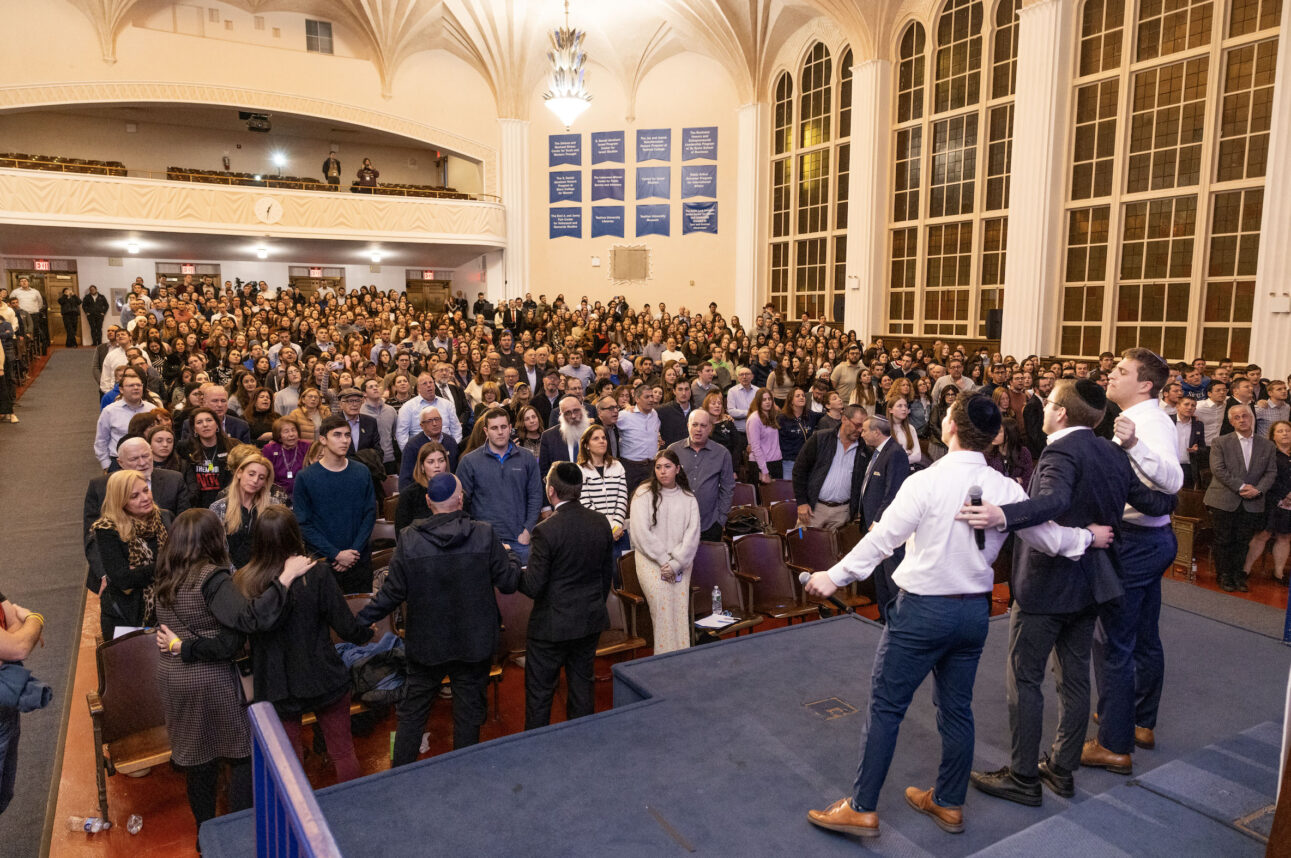“You can’t do that, Son,” a father dressed in a red bathrobe says to his son, who came home from school with a note saying he stole money from a classmate. “Why, if you want something, you have to earn it … where do you think we got this house from? Do you think we stole it?” The four members of the family, dark-haired and accented, launch into a stilted philosophical discussion about concepts of ownership and property, while sitting in a meticulously modern kitchen — sleek white cabinets, a dark-wood dining table flanked by high-backed white chairs, a low-hanging row of lights, red curtains against the white wall and gleaming stainless steel appliances.
But this isn’t a typical home. There are tags on the furniture, fake books on the shelves, and strangers strolling through the kitchen. The family is gathered in an IKEA showroom, and the scene, played out in real time as real store customers wander by, is part of a video created by Israeli video artist Guy Ben-Ner. His 18-minute work (filmed guerrilla-style, without permission), “Stealing Beauty,” will be screened during the Los Angeles premiere of “Who Am I and What’s My Name: New Video Works from Israel,” at the Museum of Contemporary Art (MOCA) on April 19.
The event, presented by MOCA and the Visual Arts Committee of The Jewish Federation’s Tel Aviv/Los Angeles Partnership, will feature eight works of video art made by Israeli artists during the past four years.
The works are all short, ranging from two to 20 minutes, and each addresses a facet of the identity theme — cultural, economic, political or other. Ben-Ner, who plays the father in his video and whose real wife and children are among the actors, explores what distinguishes us as human beings, as well as ideas about family roles and otherness.
“Ben-Ner seems to posit that we are all others in someone’s eyes,” said a New York Magazine review of a Ben-Ner exhibition last year. “Like many with over-determined histories, Ben-Ner seems to wish his family would blend in, that its back story would just go away.”
“Gefilte Fish” by Boaz Arad shows an elderly woman as she makes the quintessential Ashkenazic dish exactly as it was passed down to her by previous generations of Eastern European women. As the woman narrates the steps, the filmmaker attempts to lure her into a discussion about the differences between Ashkenazic and Sephardic Jews.
In “Sabich,” by Shachar Markus, a man circles around a giant laffa, a Middle Eastern bread, on the floor, splashing tahini and hot sauce on the doughy surface like Jackson Pollock flinging paint. He evenly distributes fried eggplants, diced eggs, Israeli salad, minced onions, pickles, amba (pickled mango sauce) and mushrooms onto the laffa, then stands back and admires his creation: an enormous Israeli-style sandwich believed to have originated among Iraqi Jews, who ate it as a Shabbat morning treat.
Uri Katzenstein’s “Hope Machines” depicts a cluster of people floating in the middle of an infinite surreal ocean, each one isolated on their own abstract structure, struggling to communicate and connect with the others in a post-apocalyptic world.
The program is curated by Sergio Edelsztein, director of Tel Aviv’s Center for Contemporary Art, and also includes: “Shopping Day” by Doron Solomons; “The Studio” by Ruti Sela; “Summer Camp” by Yael Bartana; and “I Was Called Kuni Lemel” by Roee Rosen.
This is MOCA’s first showing of contemporary video works by Israeli artists, the result of the relationships fostered by the Tel Aviv/Los Angeles Partnership.
MOCA curator Alma Ruiz first met Edelsztein when he came to Los Angeles on an arts exchange program organized by the partnership in 2002. That same year, Ruiz was invited to visit Israel to meet with Israeli curators and artists.
“We stayed in touch throughout the years and kept running into each other in different parts of the world,” said Ruiz, who curated a show at CCA in Tel Aviv titled “From and About Place: Art from Los Angeles” last year. “We had discussed doing a video program together many times, so when this opportunity came up, Sergio and I both jumped on it.”
Ruiz was intrigued by video art in Israel, a medium Edelsztein specializes in. “My impression from the two times I visited Israel was that video art and photography were both highly developed and quite excellent there.” Ruiz said she was surprised how forthright and critical Israeli artists were capable of being of their own society, religion and country.
“It shatters some of your ideas and expectations about Israel — in a good way,” Ruiz said. Israel’s heterogeneous society also took Ruiz by surprise, who before visiting the country assumed that Jews all had the same cultural heritage.
“The diversity of people astounded me. And those cultural differences are clearly reflected in these video works.”
“Who Am I and What’s My Name: New Works from Israel.” All works subtitled in English. April 19. 3 p.m. Free with museum admission. MOCA Grand Avenue, Ahmanson Auditorium, 250 S. Grand Ave., Los Angeles. (213) 621-1745.
Did you enjoy this article?
You'll love our roundtable.
Editor's Picks



What Ever Happened to the LA Times?

Who Are the Jews On Joe Biden’s Cabinet?


No Labels: The Group Fighting for the Political Center
Latest Articles


End the Iranian Islamic Regime, Now

MENA States Respond to Iran’s Missile Strike on Israel

Oct. 7 and April 13: Old Jew vs. New Jew











 More news and opinions than at a Shabbat dinner, right in your inbox.
More news and opinions than at a Shabbat dinner, right in your inbox.